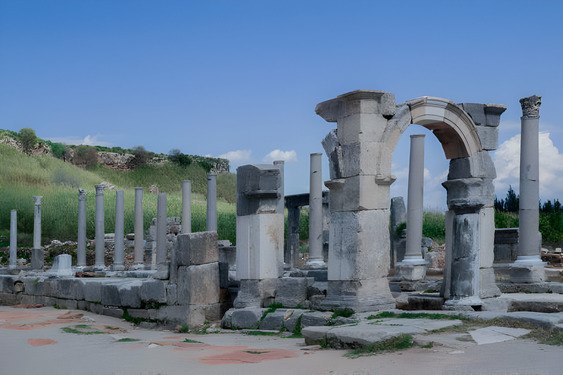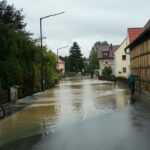
Within the sacred walls of museums and art galleries, the ever-tightrope walk between preservation and appreciation plays out every day. However, the threat of water damage looms large, posing a threat to the very foundations of these cultural havens. This all-inclusive guide aims to be the protector of masterworks, providing an inside look at the methodical process of evaluating water damage inside these premises.
Each section reveals crucial information for art caretakers, enabling them to safeguard and conserve the priceless works of art that adorn these cultural havens, from spotting the telltale indications to taking immediate action.
Imagine the whispered stories of centuries captured in brushstrokes and hues, and imagine the weight of responsibility placed on those entrusted with preserving them. Join us as we explore the complex realm of water damage assessment, equipping curators and custodians with the knowledge necessary to preserve the essence of our creative legacy.
Here is our post on A Comprehensive Guide on Dealing with Water Damage in Historic Buildings which you will not want to miss.
Recognizing Signs of Water Damage
Staining and Discoloration
Train your eye to detect staining or discoloration on walls and ceilings. These visual cues may indicate water intrusion, providing early warning signs of potential damage to artworks.
Musty Odors
Heighten your sense of smell to recognize musty odors. A lingering mustiness in the air may signify hidden water damage, prompting further investigation to protect the artworks from potential harm.
Warping or Buckling
Inspect wooden frames and canvases for warping or buckling. Changes in the shape of frames or canvases can be indicative of water absorption, posing a threat to the structural integrity of artworks.
Mold and Mildew Growth
Vigilantly look for signs of mold and mildew growth. These fungal intruders thrive in damp conditions, posing a dual threat by compromising both the aesthetic and structural elements of artworks.
Aberrations in Texture
Run your hands over surfaces to identify aberrations in texture. Irregularities, such as swelling or softening, may signify water damage, necessitating careful examination to assess the extent of the impact.
See also our post on How to Save Valuable Artwork from Water Damage
Assessing Impact on Various Art Forms
Paintings and Canvases
Examine paintings and canvases for changes in color, texture, and stability. Water damage can warp canvases, fade pigments, and compromise the overall integrity of paintings.
Sculptures and 3D Artworks
Inspect sculptures and three-dimensional artworks for signs of corrosion, warping, or surface alterations. The three-dimensional nature of these pieces demands thorough examination to identify subtle changes.
Paper-Based Artworks
Handle paper-based artworks with utmost care. Assess for wrinkling, buckling, or discoloration, as water damage can irreparably harm delicate paper and diminish the value of prints or drawings.
Textiles and Fabrics
Evaluate textiles and fabric artworks for dampness, mold, or color bleeding. Water damage can be particularly detrimental to textile pieces, requiring specialized attention to prevent irreversible harm.
Wooden Frames and Mountings
Examine wooden frames and mountings for warping or swelling. Wood is highly susceptible to water damage, and any alterations in these components can impact the stability of the entire artwork.
See also our post on How to Prevent Water Damage to Furniture: A Comprehensive Guide which will make your cleaning task hassle free.
Utilizing Advanced Technology for Assessment
Thermal Imaging
Incorporate thermal imaging technology to identify hidden water sources. Thermal cameras can detect variations in temperature, unveiling potential water leaks or infiltration concealed behind walls.
Moisture Meters
Deploy moisture meters for quantitative assessments. These handheld devices measure the moisture content in various materials, aiding in pinpointing areas with elevated moisture levels that require attention.
Humidity Sensors
Install humidity sensors in exhibition spaces. These sensors continuously monitor humidity levels, providing real-time data to curators and enabling proactive measures to mitigate potential water damage.
Digital Imaging and Documentation
Embrace digital imaging for comprehensive documentation. High-resolution photographs and scans serve as invaluable reference points for assessing pre-existing conditions and tracking changes over time.
Data Logging Systems
Implement data logging systems for environmental monitoring. These systems record temperature, humidity, and other factors, offering a comprehensive dataset for curators to analyze and optimize display conditions.
Immediate Response Measures
Isolation of Affected Areas
Swiftly isolate areas affected by water damage. Prevent the spread of moisture to adjoining spaces, minimizing the impact on additional artworks and allowing focused attention to the affected zone.
Removal of Artworks from Danger Zones
Prioritize the removal of artworks from endangered areas. Transferring pieces to a controlled environment mitigates further damage and provides an opportunity for thorough assessment and restoration.
Controlled Drying Techniques
Implement controlled drying techniques for affected artworks. Regulate temperature and humidity to facilitate gradual drying, preventing rapid changes that may exacerbate water damage.
Mold Remediation
Initiate mold remediation measures promptly. Professional expertise is crucial in safely removing mold and preventing its recurrence, safeguarding both the artwork and the health of those within the museum or gallery.
Emergency Conservation Measures
Engage conservation experts for emergency measures. Conservators possess the skills to stabilize artworks in distress, ensuring their immediate well-being until a comprehensive assessment and restoration plan can be executed.
See also our post on Tips for Preventing Water Damage: A Comprehensive Guide which you will not want to miss before you begin your restoration task.
Collaborative Efforts for Assessment
Interdepartmental Communication
Establish effective communication between departments. Coordination between curators, conservationists, and facilities management ensures a holistic approach to water damage assessment and mitigation.
Collaboration with Restoration Experts
Forge partnerships with restoration experts. Expertise in art restoration is essential for assessing the extent of damage, formulating restoration plans, and executing delicate interventions to preserve the integrity of artworks.
Engaging with Insurance Professionals
Collaborate with insurance professionals to assess coverage. Timely engagement with insurance experts facilitates the smooth processing of claims and financial support for restoration efforts.
Involvement of Art Historians
Involve art historians in the assessment process. Their knowledge of art history and materials aids in contextualizing damage, informing restoration decisions, and preserving the authenticity of artworks.
Public Awareness and Support
Raise public awareness about water damage and its impact on cultural heritage. Educating the public fosters a sense of shared responsibility and encourages support for initiatives that safeguard artistic treasures.
Long-Term Strategies for Prevention
Climate Control Systems
Invest in climate control systems for exhibition spaces. Maintaining stable temperature and humidity levels creates an environment conducive to the preservation of artworks.
Water Leak Detection Systems
Install water leak detection systems. Early detection of leaks minimizes the risk of extensive water damage, allowing prompt intervention to protect valuable artworks.
Regular Environmental Monitoring
Conduct regular environmental monitoring. Consistent tracking of temperature, humidity, and other environmental factors enables curators to preemptively address conditions that may lead to water damage.
Staff Training Programs
Implement staff training programs on emergency response. Equipping museum and gallery staff with the knowledge to identify and respond to water damage ensures a swift and coordinated effort in times of crisis.
Building Infrastructure Upgrades
Consider building infrastructure upgrades. Investing in technologies such as waterproofing, improved drainage, and resilient roofing enhances the structural resilience of the facility against water damage.
See also our post on How to Save Important Documents from Water Damage
Legal and Ethical Considerations
Compliance with Conservation Ethics
Adhere to conservation ethics in assessment and restoration. Balancing the preservation of artistic authenticity with restoration efforts requires careful consideration and respect for ethical standards.
Legal Protections for Art Collections
Understand legal protections for art collections. Familiarize yourself with laws governing art ownership, provenance, and rights, ensuring legal compliance during assessment and restoration.
Insurance Documentation and Valuation
Maintain meticulous insurance documentation and valuation records. Accurate records support insurance claims, providing the necessary evidence for reimbursement and ensuring fair compensation for damage.
Collaboration with Legal Experts
Collaborate with legal experts for guidance. Legal professionals well-versed in art law can provide invaluable advice on compliance, claims processing, and any legal considerations arising from water damage.
Public Accountability and Transparency
Embrace public accountability and transparency. Keeping stakeholders informed about assessment findings, restoration plans, and preventive measures fosters trust and support from the public and governing bodies.
Here is our post on Most Reliable Tips for Restoring Water-Damaged Roofing which you will not want to miss.
Conclusion
Water damage is a silent threat that can be defeated if curators, conservators, and the general public work together to protect our cultural assets. This guide urges a shared commitment to protecting art, not just from conservators and curators but also from all those who value beauty in art.
Let this guide serve as a testament to the teamwork required to guarantee that the historical whispers found within museum walls and gallery canvases remain undisturbed by the soft but powerful forces of water. May every brushstroke and sculpture endure, untainted by the unseen challenges, guaranteeing that the rich tapestry of our common heritage stays vivid and intact for future generations.






